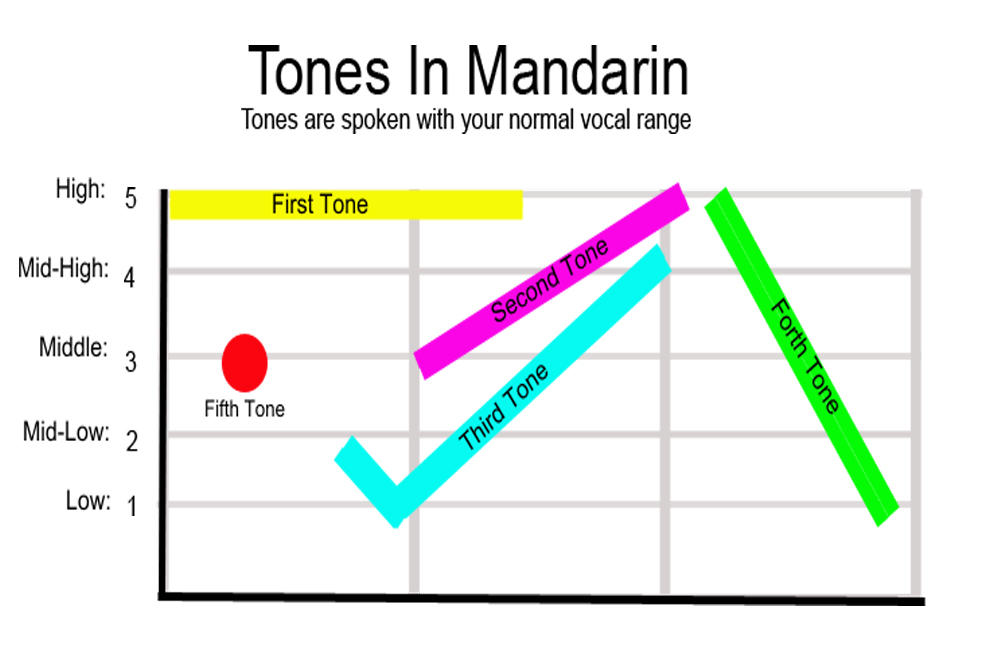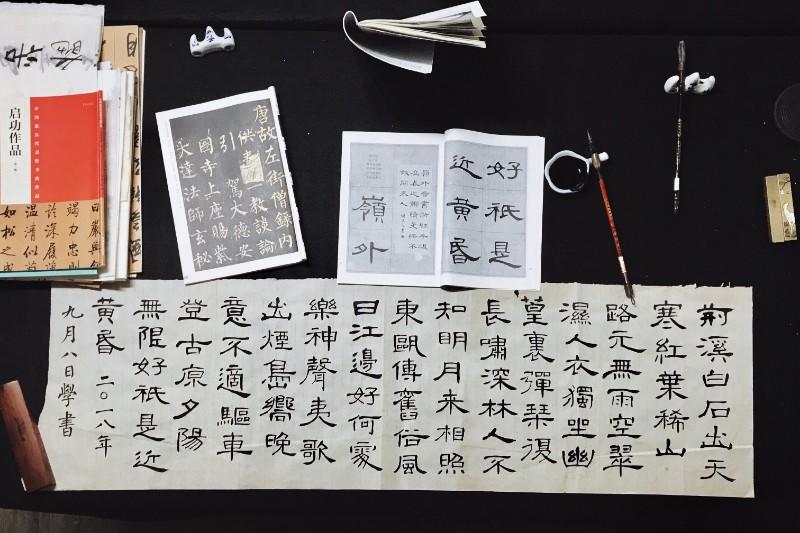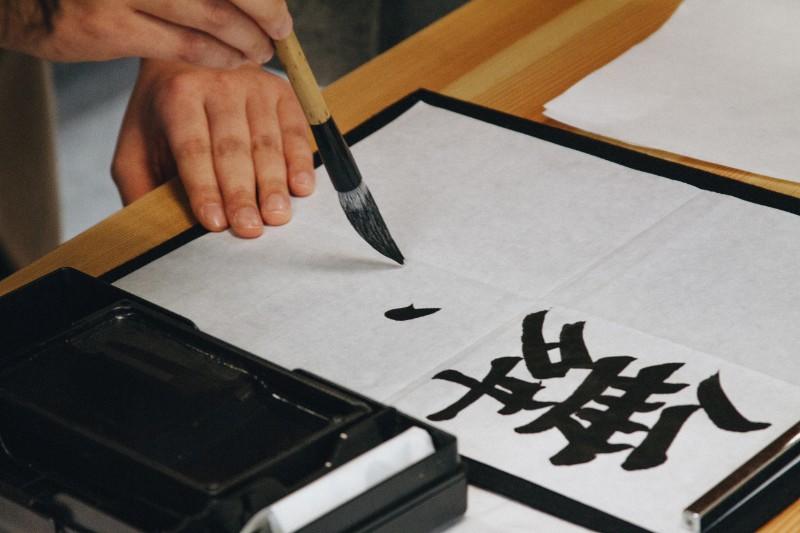Learning Mandarin offers more than just language skills, it also provides fascinating insight into Chinese culture, history, and people.
Language learning also enhances communication through non-verbal cues like body language, tone, and stress, not just words.
Chinese is an unusual language in many ways, not least of all for its absence of verb conjugation, but also for its five Chinese tones, which is how expression is conveyed. Keep reading, to learn more.
Want to give private lessons?
Join the Superprof community and share your knowledge with inquiring and motivated students.
What Are Tonal Languages?
In Asia, 65% of all languages use tonality in their structure. You’ll notice that Mandarin Chinese, Vietnamese, Punjabi, Thai, and Cantonese use tones for precise communication. For Europeans though, Mandarin tones can be challenging to learn as their exposure to them is limited.
Tonal languages like Mandarin for instance use Chinese tone marks for word meaning, separate from intonation for emotions.
Not unlike Spanish, French and even English, Chinese tone marks accompany written words to aid learning. Despite its complexity, Chinese, with its five Mandarin tones is widely spoken.
The System Behind Chinese Tones
When learning Chinese, a major hurdle is grasping the structure behind Mandarin tones. Fortunately, Mandarin has only five tones, making it more manageable. Cantonese, on the other hand, presents a greater challenge with its nine tones.

Chinese tones determine the inflection of your voice to convey a particular meaning of a word in a sentence.
- The first tone is a neutral high-pitched sound.
- The second tone gradually rises to the highest part of your voice.
- The third tone starts with a fall and then rises to the highest part of your voice.
- The fourth tone falls to the lowest part of your voice.
- The neutral tone, also known as the "fifth tone," is a short mid-level exclamation.
This Chinese tones explained chart shows that each of these tones occupies a distinct pitch level, with level 5 representing the highest pitch and level 1 the lowest. These Mandarin tones, explained, mean that you do not necessarily alter your voice, but that your natural speech should encompass pitch variations.
- First tone: level 5.
- Second tone: level 3 to 5.
- Third tone: 2-1-4.
- Fourth tone: 5 to 1.
- Fifth tone: short, within tone 3.
To help explain Chinese tone marks, we will use PinYin (Hanyu PinYin) the Chinese system created to change Chinese letters into Latin letters.

Mandarin Tones Explained: The First
As is the most straightforward of all Chinese tones because it is the most neutral, the first tone is characterised by the following:
- No intonation on the actual word.
- The vowels remain stable.
- The tone is flat.
- The pronunciation is simply high pitched.
The Corresponding Pinyin Accent
The first tone is represented by a flat written accent, resembling a hat on the letter. It is denoted by the letter ? ?, indicating that it should be pronounced with the first tone.
Finding the First Tone in English
The first tone in Mandarin is similar to the sound "errrrrr" in English when you're unsure or searching for an answer to a question. Referencing the graph above, try saying "errrrr" to understand the first tone in Mandarin.
The First Pinyin Tone in Action
Check out these examples using real Chinese sentences.
- zh?ng guó, meaning China.
- zh?ng wén, meaning Chinese.
- b?ng máng, meaning to help.
A full sentence using Chinese tone marks:
- zh?ng guó rén shu? zh?ng wén - Chinese people speak Chinese.
Want to give private lessons?
Join the Superprof community and share your knowledge with inquiring and motivated students.
Mandarin Tone Marks: The Second
The second tone ascends from a middle tone to a high tone, resembling the English expression of surprise or a questioning tone, like when saying "Hello?”. Most notably:
- The tone rises.
- The pronunciation starts in a mid-tone and moves towards a higher note.
The Corresponding Pinyin Accent
The second tone is visually represented by a rising written accent, which resembles a line going up at the end. It is denoted by the letter Áá, indicating that it should be pronounced with the second tone.
The Second Tone in English
The second tone in Mandarin corresponds to the English expression "yeah?" when someone calls you. Refer to the tone chart above and say "Yeah?" to understand the second tone in Mandarin.
The Second Pinyin Tone in Action
Here are Chinese tones explained using the second tone:
- fáng ji?n, meaning room.
- zuó ti?n, meaning yesterday.
- xióng m?o, meaning panda.
Mandarin Tones Explained: The Third Tone
The third tone in Mandarin follows a curved pattern, which resembles a shortened 'Nike tick' or 'V'. It starts from a mid-tone, drops to a low tone, and then rises back up to a high tone. It combines the English expressions of suspicion, confusion, and astonishment. For example, if someone gave you a R1000 tip for your good work, you might say "Really?!" Your voice would initially go down in disbelief and then rise up at the end with questioning astonishment, hoping it's true.
The third tone is characterised by the following:
- The tone falls and then rises.
- The pronunciation begins on a mid-tone, moves towards a low tone and ends on a high note.
The Corresponding Pinyin Accent
The third tone in Mandarin is visually represented by a written accent that falls and then rises up at the end, resembling a tick mark. It is denoted by the letter ? ?, indicating that it should be pronounced with the third tone.
The Third Tone in English
The third tone in Mandarin corresponds to the English expression "Really?!" when someone offers you something valuable, expressing a mix of suspicion, surprise, and questioning. Refer to the chart above and say "Really?!" (Rea = falling, lly = rising) to understand the third tone in Mandarin.
The Third Pinyin Tone in Action
Examples of the third Pinyin tone in action:
- píng gu? meaning apple.
- méi y?u meaning not; not have; without.
- yóu y?ng meaning to swim.
To include your basic Chinese verbs in a sentence with Chinese tone marks.
- méi y?u ná píng gu? hé niú n?i - (Someone) has not taken the apple or the milk.
From this example, you can see that the third tone accent is easy to identify from the others.

Mandarin: The Fourth Tone
Using the same letters as before, the meaning of "mà" has now changed to "to curse." Fourth Chinese tone marks are characterised as follows:
- They descend (going down).
- They start high and end low.
- It’s a short, sharp sound.
The Corresponding Pinyin Accent
The fourth tone in Mandarin is visually represented by a written accent that falls. It is denoted by the letter À à, indicating that it should be pronounced with the fourth tone.
The Fourth Tone in English
The fourth tone in Mandarin can be likened to the English expression "Ow!!!" Imagine accidentally hitting your toe and then expressing pain.
The Fourth Tone Pinyin Tone in Action
Examples of Chinese tone marks for the fourth tone:
- qián miàn, meaning the front.
- yán sè, meaning colour.
- wén huà, meaning culture.
As you can see, the fourth Chinese tone marks are easy to distinguish from the others.
Chinese Tones Explained: The Fifth Tone
When it comes to Mandarin tones explained, the fifth one is the most complex because it does not have a written Chinese Pinyin accent. Occasionally, it is represented by a small dot above the letter.
The fifth tone is a bit of a vagabond, it can be used for any pitch and has no unique tone of its own. The fifth tone relies solely on sentence construction.
The fifth tone is characterised by:
- A short and sharp sound.
This sound is similar to quickly tapping a pen on a desk once. It is swift and can be vocalised with any letter. It is also crucial to recognise and distinguish this tone when speaking.
Finally, when it comes to Chinese tones explained simply, the bottom line is that all five need to be mastered for fluency. In Mandarin, tones are vital for clear communication, whether you're in Beijing or Taiwan. Using English intonation or neglecting the tones can lead to difficulties in being understood. Keep practising your Chinese tones and most of all remember to have fun as you enjoy the beautiful and expressive language of Chinese. Good luck.
Want to give private lessons?
Join the Superprof community and share your knowledge with inquiring and motivated students.





